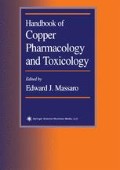Abstract
Circadian rhythms are found in virtually all organisms and are tightly coupled to environmental lighting conditions. These rhythms dictate our daily sleep schedule and hormonal fluctuations (1) and even influence our susceptibility to disease such as heart attacks (2), strokes (3), and seizures (4). One of the best studied circadian rhythms is the activity of the pineal gland, an organ situated deep within the brain. The pineal exhibits dramatic diurnal fluctuations in secretion of the hormone melatonin, which is best known for its soporific effects in humans. Melatonin is the only vertebrate hormone that is known to universally link environmental light information to the body’s physiological responses, including clock resetting, seasonal reproduction, and sleep (5). To understand the molecular basis of the circadian regulation of the pineal gland, we identified a set of genes expressed exclusively in the nighttime pineal. One of these genes, the pineal night-specific ATPase (PINA) is the focus of this chapter. PINA is a novel splice form of ATP7B and a putative copper transporter, which is active in the pineal only at night. The identification of PINA suggests that dynamic regulation of copper may play an integral role in circadian rhythms, and the study of PINA’ s functional differences from ATP7B may prove useful in understanding metal-transporting ATPases.
Access this chapter
Tax calculation will be finalised at checkout
Purchases are for personal use only
Preview
Unable to display preview. Download preview PDF.
References
Moore-Ede, M. C., Sultzman, F. M., and Fuller, C. A. (1982) The Clocks That Time Us-Physiology of the Circadian Timing System. Harvard University Press, Cambridge, MA.
Purcell, H. and Mulcahy, D. (1995) Circadian rhythms and the onset of myocardial infarction: clinical implications. J. Cardiovasc. Risk 2, 510–514.
Vermeer, S. E., Rinkel, G. J., and Algra, A. (1997) Circadian fluctuations in onset of subarachnoid hemorrhage. New data on aneurysmal and perimesencephalic hemorrhage and a systematic review. Stroke 28, 805–808.
Quigg, M. (2000) Circadian rhythms: interactions with seizures and epilepsy. Epilepsy Res. 42, 43–55.
Arendt, J. (1995) Melatonin and the Mammalian Pineal Gland. Chapman & Hall, London.
Borjigin, J., Li, X., and Snyder, S. H. (1999) The pineal gland and melatonin: molecular and pharmacologic regulation. Annu. Rev. Pharmacol. Toxicol. 39, 53–65.
Borjigin, J., Wang, M. M., and Snyder, S. H. (1995) Diurnal variation in mRNA encoding serotonin N-acetyltransferase in pineal gland. Nature 378, 783–785.
Li, X., Chen, S., Wang, Q., Zack, D. J., Snyder, S. H., and Borjigin, J. (1998) A pineal regulatory element (PIRE) mediates transactivation by the pineal/retina-specific transcription factor CRX. Proc. Natl. Acad. Sci. USA 95, 1876 1881.
Thomas, G. R., Forbes, J. R., Roberts, E. A., Walshe, J. M., and Cox, D. W. (1995) The Wilson disease gene: spectrum of mutations and their consequences [published erratum appears in Nature Genet. 1995 Apr;9(4):451]. Nature Genet. 9, 210–217.
Borjigin, J., Payne, A. S., Deng, J., Li, X., Wang, M. M., Ovodenko, B., et al. (1999) A novel pineal night-specific ATPase encoded by the Wilson disease gene. J. Neurosci. 19, 1018–1026.
Bull, P. C. and Cox, D. W. (1994) Wilson disease and Menkes disease: new handles on heavy-metal transport. Trends Genet. 10, 246–252.
Wu, J., Forbes, J. R., Chen, H. S., and Cox, D. W. (1994) The LEC rat has a deletion in the copper transporting ATPase gene homologous to the Wilson disease gene. Nature Genet. 7, 541–545.
Mori, M., Hattori, A., Sawaki, M., Tsuzuki, N., Sawada, N., Oyamada, M., et al. (1994) The LEC rat: a model for human hepatitis, liver cancer, and much more. Am. J. Pathol. 144, 200–204.
Drijfhout, W. J., Grol, C. J., and Westerink, B. H. (1993), Microdialysis of melatonin in the rat pineal gland: methodology and pharmacological applications. J. Neurochem. 61, 936–942
Gastel, J. A., Roseboom, P. H., Rinaldi, P. A., Weller, J. L., and Klein, D. C. (1998) Melatonin production: proteasomal proteolysis in serotonin N-acetyltransferase regulation. Science 279, 1358–1360.
Sethi, S., Grover, S., and Khodaskar, M. B. (1993) Role of copper in Indian childhood cirrhosis. Ann. Trop. Paediatr. 13, 3–5.
Muller, T., Feichtinger, H., Berger, H., and Muller, W. (1996) Endemic Tyrolean infantile cirrhosis: an ecogenetic disorder. Lancet 347, 877–880.
Muller, T., van de Sluis, B., Muller, W., Pearson, P., and Wijmenga, C. (1999) Non-Indian childhood cirrhosis. Eur. J. Med. Res. 4, 293–297.
Sato, M., Sugiyama, T., Daimon, T., and Iijima, K. (1994) Histochemical evidence for abnormal copper distribution in the central nervous system of LEC mutant rat. Neurosci. Lett. 171, 97–100.
Saito, T., Itoh, T., Fujimura, M., and Saito, K. (1995) Age-dependent and region-specific differences in the distribution of trace elements in 7 brain regions of Long-Evans Cinnamon (LEC) rats with hereditary abnormal copper metabolism. Brain Res. 695, 240–244.
Editor information
Editors and Affiliations
Rights and permissions
Copyright information
© 2002 Springer Science+Business Media New York
About this chapter
Cite this chapter
Borjigin, J., Sun, X., Wang, M.M. (2002). The Role of PINA in Copper Transport, Circadian Rhythms, and Wilson’s Disease. In: Massaro, E.J. (eds) Handbook of Copper Pharmacology and Toxicology. Humana Press, Totowa, NJ. https://doi.org/10.1007/978-1-59259-288-3_11
Download citation
DOI: https://doi.org/10.1007/978-1-59259-288-3_11
Publisher Name: Humana Press, Totowa, NJ
Print ISBN: 978-1-61737-266-7
Online ISBN: 978-1-59259-288-3
eBook Packages: Springer Book Archive

